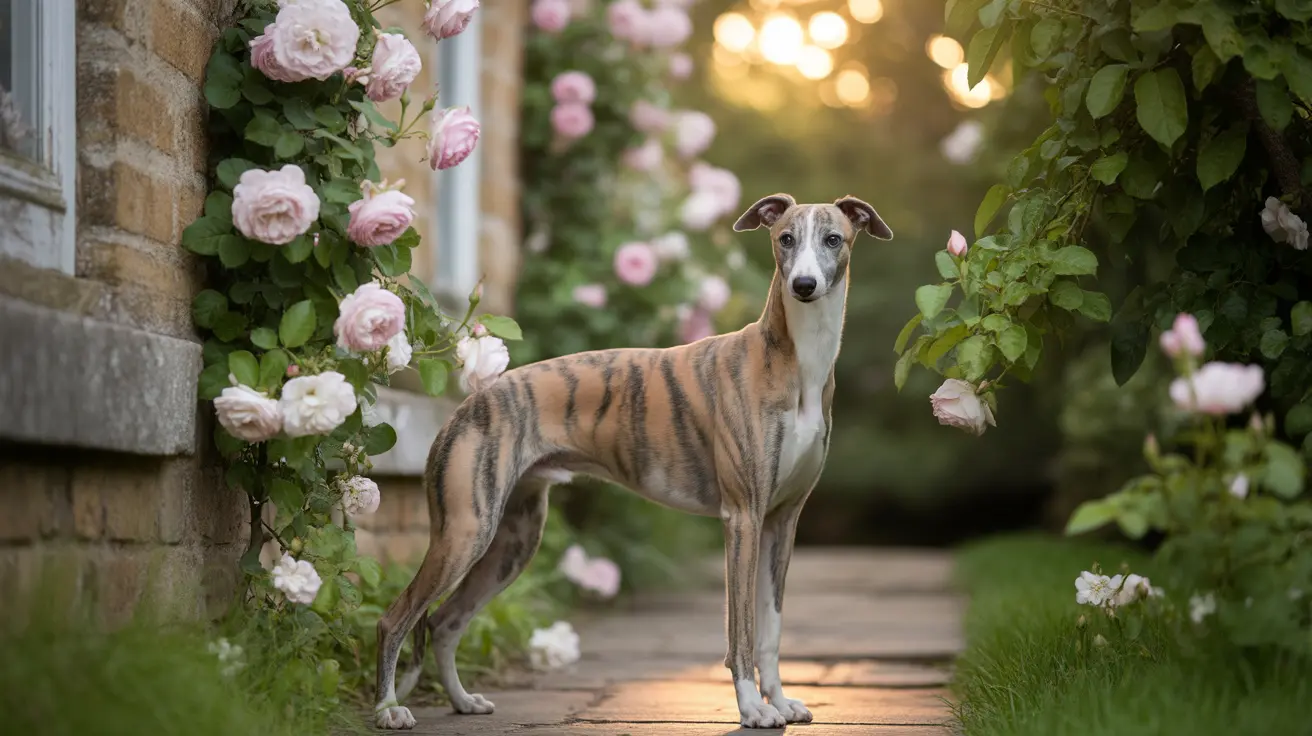Introduction
Whippets are renowned for their remarkable diversity in coat colors and patterns, making them one of the most visually striking dog breeds. From classic solid shades to intricate patterns, these elegant sighthounds showcase an impressive array of colors that captivate dog enthusiasts worldwide. Understanding Whippet colours not only helps potential owners make informed choices but also provides fascinating insights into canine genetics and breed characteristics.
In this comprehensive guide, we'll explore the full spectrum of Whippet colours, from common variations to rare gems, while delving into the genetics behind these beautiful coats and their implications for breeding and care.
Common Whippet Coat Colors
Solid Colors
Whippets display several striking solid colors that highlight their sleek physique:
Black Whippets exhibit a rich, glossy coat that emphasizes their muscular structure and elegant lines. The depth of their color creates a dramatic backdrop for their expressive eyes.
Fawn Whippets range from light cream to deep tan, offering a warm, natural appearance that many find appealing. This versatile color can present different undertones, making each dog uniquely beautiful.
White Whippets possess a pristine coat that exemplifies the breed's refined appearance. Their pure color makes them particularly striking in the show ring and as companion dogs.
Mixed and Pattern Variations
Brindle Whippets showcase distinctive striping patterns, where darker colors overlay a lighter base coat. This tiger-like pattern is highly sought after and can appear in various color combinations.
Blue Whippets display a diluted black coat that appears as a striking gray-blue shade. This color variation is particularly prized among enthusiasts and can range from light silver to deep steel blue.
Rare and Unique Color Variations
Blue fawn represents one of the most unusual and desired color combinations in Whippets. This rare variation creates a subtle, ethereal appearance that combines the softness of fawn with blue undertones.
Parti-colored Whippets feature two or more distinct colors, typically including white as a base with patches of other colors. These striking combinations make each dog truly unique.
Genetics and Color Inheritance
The diverse range of Whippet colours stems from complex genetic interactions. Multiple gene loci control different aspects of coat color and pattern development, including:
- The MC1R gene influencing base colors
- The K locus determining solid versus brindle patterns
- The D locus controlling color dilution
- The S locus affecting white marking distribution
Understanding these genetic factors helps breeders make informed decisions while maintaining the breed's health and diversity.
Show Standards and Color Preferences
In the show ring, Whippets enjoy the unique distinction of having no color restrictions. The American Kennel Club and other major kennel clubs specify "color immaterial" in their breed standards, celebrating the breed's diverse palette rather than limiting it.
Care Considerations for Different Colors
While all Whippet colours are equally healthy, certain colors may require specific care considerations:
White and light-colored Whippets may need extra sun protection to prevent sunburn. Dark-colored Whippets might show coat fading with sun exposure, though this is primarily cosmetic.
Frequently Asked Questions
What are the most common coat colors seen in Whippets?
The most common Whippet colours include black, fawn, white, and brindle. These colors appear frequently in the breed and are equally celebrated in show rings and among pet owners.
How do genetics determine the wide variety of Whippet coat colors and patterns?
Whippet coat colors are determined by multiple genes working in combination. Key genetic loci control base colors, pattern distribution, and color dilution, creating the breed's diverse color palette.
What are the rarest and most unique Whippet colors, such as blue fawn or orange?
Blue fawn and pure orange are among the rarest Whippet colours. Blue fawn results from a specific genetic combination of dilution and base color genes, while pure orange is an uncommon natural variation.
Are certain Whippet coat colors preferred or penalized in dog shows and breed standards?
No Whippet colours are penalized in major show rings. The breed standard specifically states "color immaterial," meaning all colors and patterns are equally acceptable for show purposes.
Do different Whippet coat colors require special care or have any health implications?
While coat color doesn't affect overall health, lighter-colored Whippets may need extra sun protection. Otherwise, all colors require the same basic grooming and care routines.
Conclusion
The rich variety of Whippet colours adds to the breed's charm and appeal. Whether you prefer the classic elegance of solid colors or the unique beauty of rare variations, every Whippet's coat tells a story of genetic diversity and careful breeding. When choosing a Whippet, remember that while color can be aesthetically important, temperament and health should always be the primary considerations.






